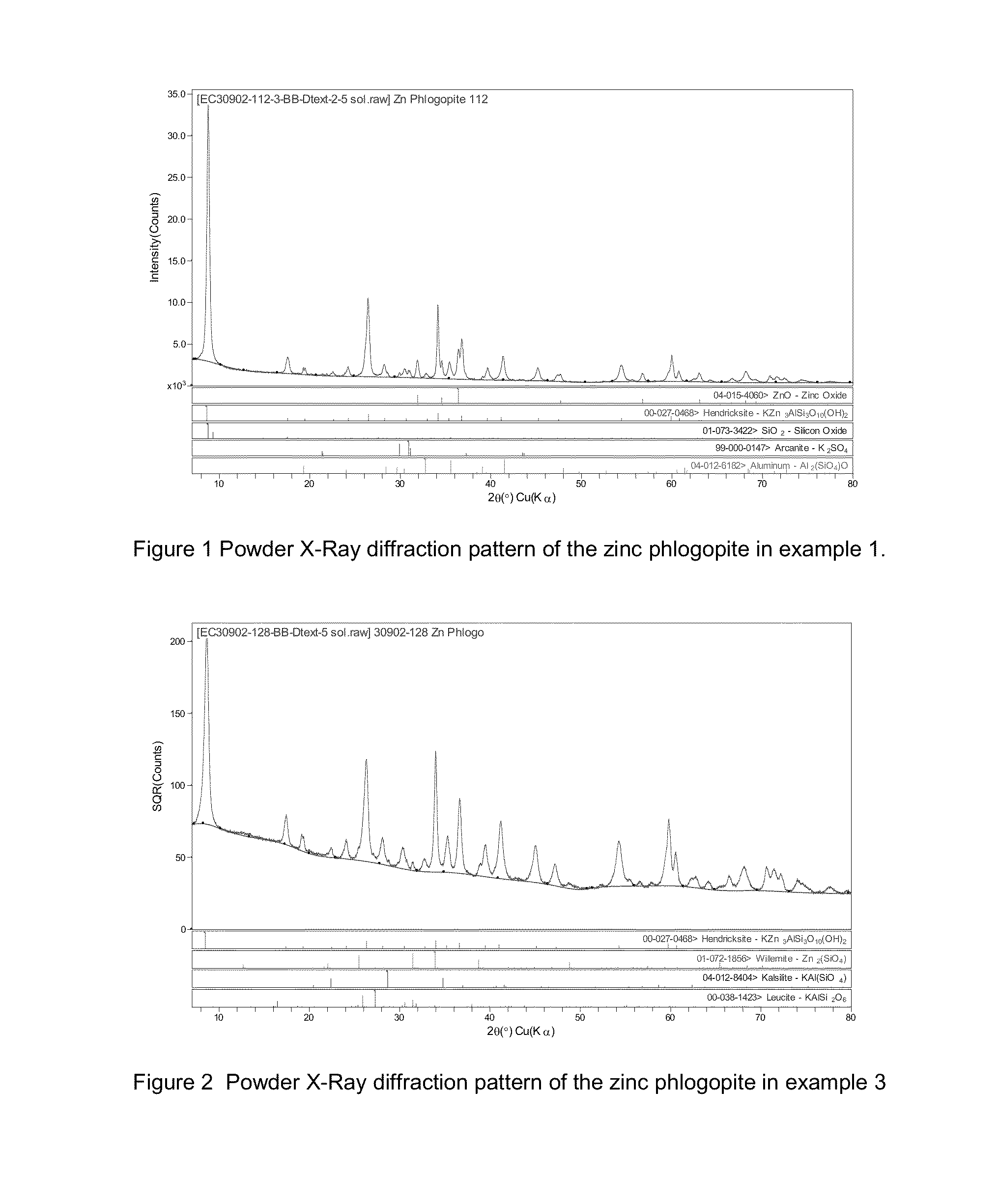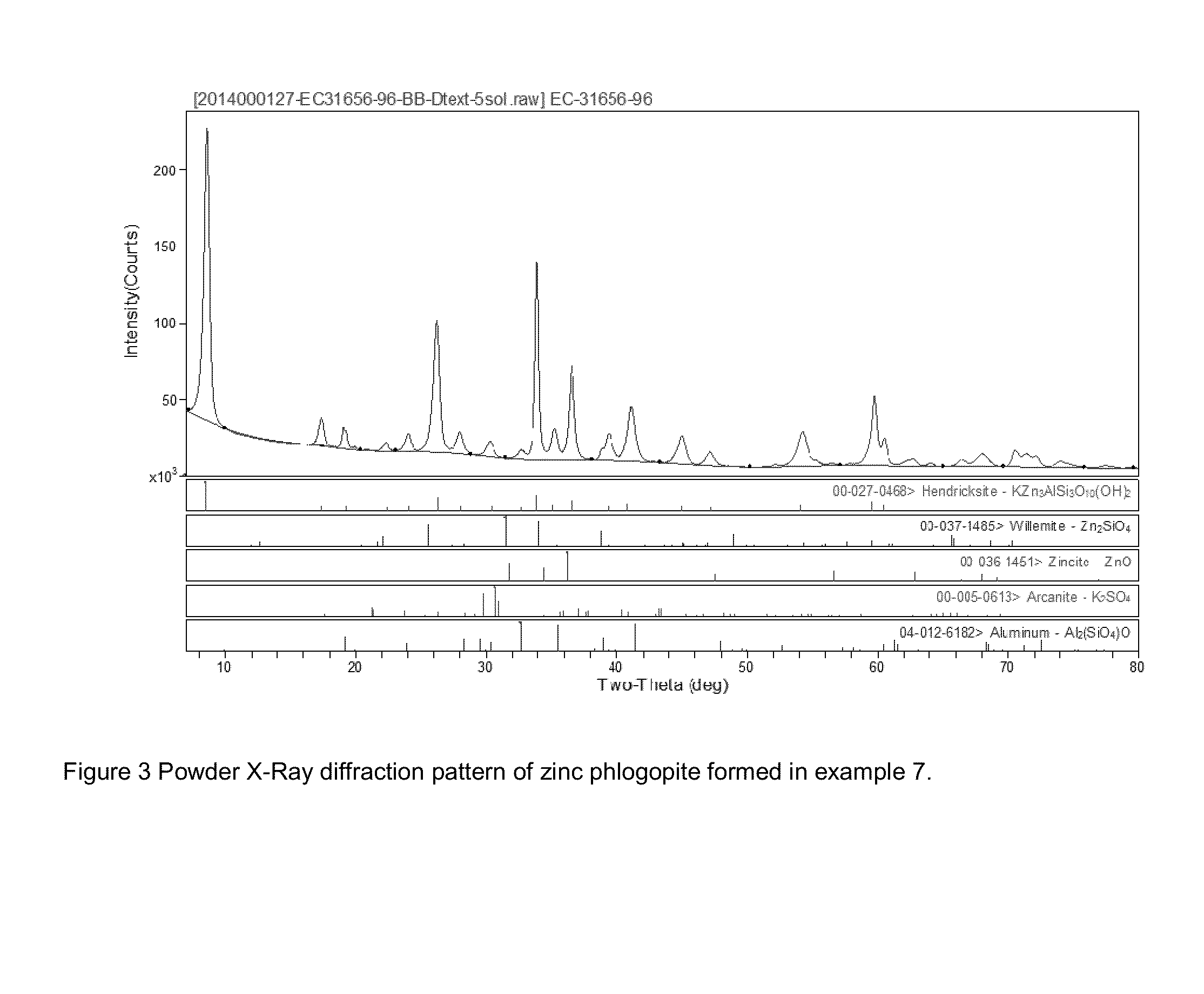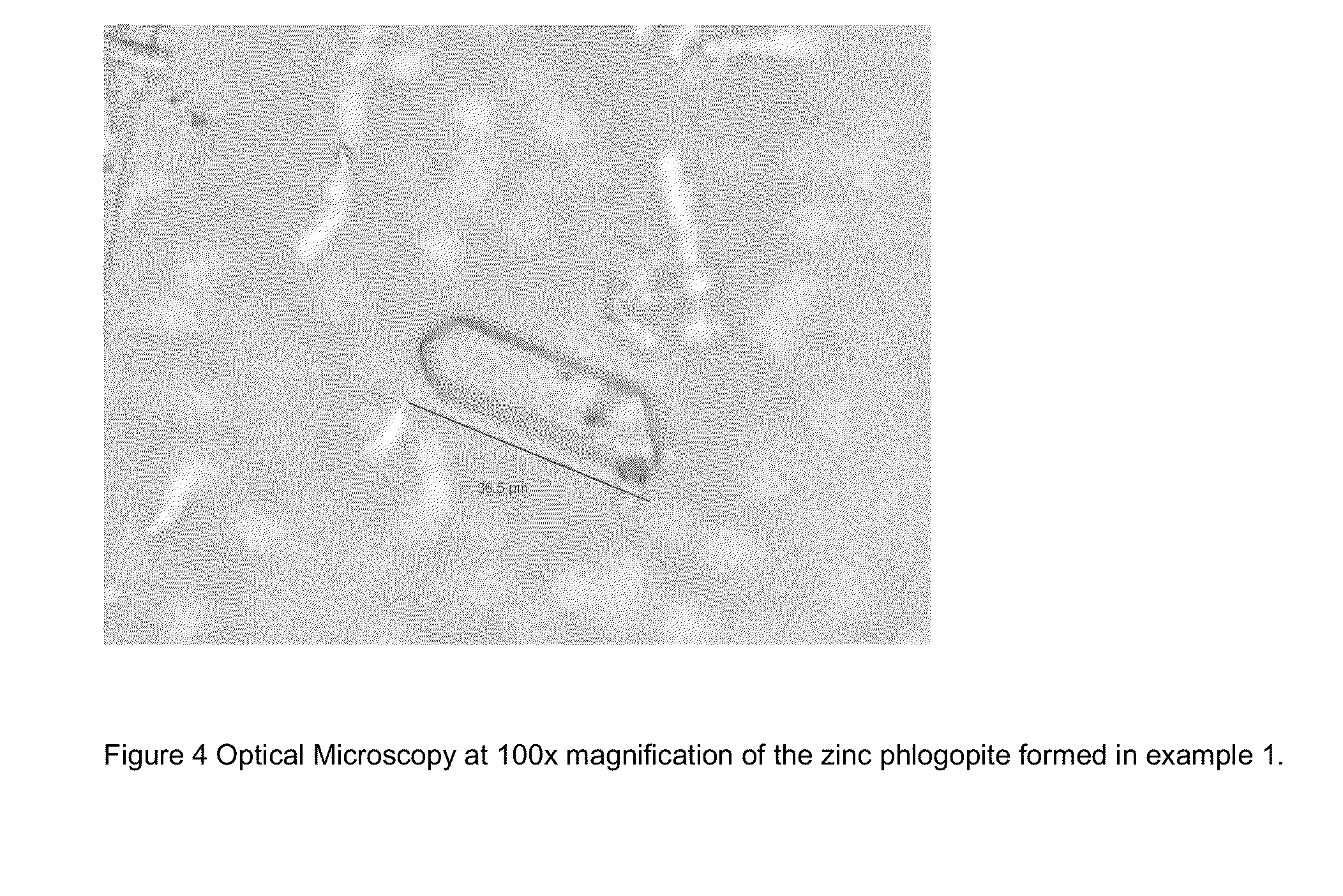Synthetic Zinc Phlogopite via Hydrothermal Preparation
a technology of synthetic zinc phlogopite and hydrothermal preparation, which is applied in the direction of silicates, crystal growth process, transportation and packaging, etc., can solve the problems of unfavorable mica surface smoothness, and often discolored mica
- Summary
- Abstract
- Description
- Claims
- Application Information
AI Technical Summary
Benefits of technology
Problems solved by technology
Method used
Image
Examples
example 1
[0323]The starting reagents are potassium aluminate, zinc sulfate heptahydrate, potassium hydroxide, and colloidal silica. A 6M KOH solution is added to zinc sulfate heptahydrate and the mixture is stirred for approximately five minutes. 6M KOH is added to potassium aluminate and the contents are swirled to mix. The two mixtures are combined and water and trisodium citrate dihydrate are added. The reaction mixture is transferred to a Parr reactor and the colloidal silica is added forming a gel. The Parr reactor is sealed and placed in an oven at 200° C. for 24 hours. Upon cooling to room temperature, the reaction is filtered and washed with D.I. water yielding a white powder.
[0324]FIG. 1 shows the Powder X-Ray diffraction pattern of the zinc phlogopite confirming formation in example 1.
[0325]FIG. 4 Optical Microscopy at 100× magnification of the zinc phlogopite formed in example 1.
example 3
[0326]The starting reagents are potassium aluminate, zinc sulfate heptahydrate, potassium hydroxide, and colloidal silica. A 6M KOH solution is added to zinc sulfate heptahydrate and the mixture is stirred for approximately five minutes. 6M KOH is added to potassium aluminate and the contents are swirled to mix. The two mixtures are combined and water and trisodium citrate dihydrate are added. The reaction mixture is transferred to a stirred Parr reactor and the colloidal silica is added forming a gel. The Parr reactor is sealed and the stir-rate is set to 100 rpm. The reactor is heated to 200° C. and kept at temperature for 24 hours. Upon cooling to room temperature, the reaction is filtered and washed with D.I. water yielding a white powder.
[0327]FIG. 2 shows the X-Ray diffraction pattern of zinc phlogopite confirming formation in example 3.
example 8
[0328]The starting reagents are potassium aluminate, zinc sulfate heptahydrate, potassium hydroxide, and colloidal silica. A 16M KOH solution is added to zinc sulfate heptahydrate and the mixture is stirred for approximately five minutes. 16M KOH is added to potassium aluminate and the contents are swirled to mix. A colloidal silica solution is weighed into a beaker. The trisodium citrate dihydrate is dissolved in water and added separately to each of the zinc sulfate heptahydrate solution, potassium aluminate solution, and colloidal silica solution. All three solutions are spatula stirred and allowed to stand for five minutes, then combined. The combined reaction mixture is transferred to a stirred Parr reactor with additional water to completely transfer the reagents. The Parr reactor is sealed and the stir-rate is set to 400 rpm. The reactor is heated to reach a temperature of 200° C. and kept at temperature for 24 hours. Upon cooling to room temperature, the reaction is filtered...
PUM
| Property | Measurement | Unit |
|---|---|---|
| temperature | aaaaa | aaaaa |
| pressure | aaaaa | aaaaa |
| thickness | aaaaa | aaaaa |
Abstract
Description
Claims
Application Information
 Login to View More
Login to View More - R&D
- Intellectual Property
- Life Sciences
- Materials
- Tech Scout
- Unparalleled Data Quality
- Higher Quality Content
- 60% Fewer Hallucinations
Browse by: Latest US Patents, China's latest patents, Technical Efficacy Thesaurus, Application Domain, Technology Topic, Popular Technical Reports.
© 2025 PatSnap. All rights reserved.Legal|Privacy policy|Modern Slavery Act Transparency Statement|Sitemap|About US| Contact US: help@patsnap.com



